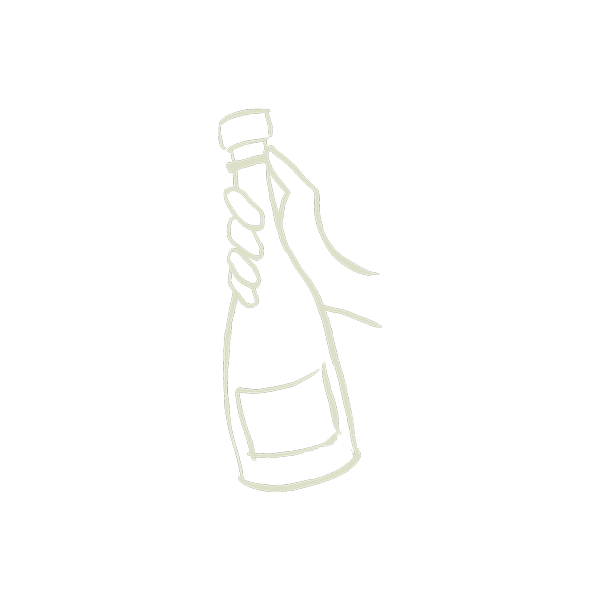The nature of grower Champagne
An up-close look at the sustainable farming practices that give grower Champagne its signature pop.
The marvelous, meticulous Methode Champenoise is a tradition deeply rooted in achieving harmony with nature. As stewards of their land and livelihoods, fatcork growers are acutely tuned in to the needs of soil and vine, and they seek out the most natural means of tending their crops and tackling challenges. From generation to generation, these grower Champagne-producing families pass down their values, protecting their environment and making choices that support and maintain economic feasibility. They believe it is their social responsibility to prioritize environmentally safe practices that not only preserve and ensure the longevity of their land’s natural resources but also produce the highest quality Champagne.

Fatcork growers engage in sustainable agriculture, an umbrella term for a diverse group of practices that includes both organic and biodynamic farming. The common thread through these practices is their reliance on natural processes that recycle nutrients on site, reducing or eliminating the need for non-renewable resources. Fatcork growers take care of the land by repurposing water, harvesting rainwater, building soils organically with compost and manure, creating biodiversity with bees, plants and animals, and using tea-like infusions made from herbs, leaves, roots and berries instead of conventional pesticides.

Everything from protecting the soil to pruning the vines to harvesting the grapes is part of this natural farming ideology. When an ecosystem is in balance, all is as it should be, and any problems that arise have a way of taking care of themselves. Vines need healthy, nutrient-rich soil. Bird droppings help fertilize the soil. Birds come to the vineyards to feed on the bugs. Bugs are plentiful when the soil is healthy. This harmonious cycle continues around and around. The delicious Champagne in your glass is a direct result of this healthy balance of nature in our growers’ vineyards in France.
It is a privilege to work closely with the amazing grower Champagne-making families that take these sustainable practices to heart and an honor to share their extraordinary cuvées with you. We hope that when you pop open these bottles, you’ll find even more joy in every sip, knowing that the hardworking hands that brought forth the bubbles in your glass made every effort to maintain a perfect balance with “la nature.”
Pictured above: Hervieux-Dumez, Didier-Ducos, Stéphane Regnault
Making sense of eco-certifications
Certified Organic
To be certified as organic, the producer must not have used chemical pesticides, herbicides, fungicides or fertilizers in the last three years. However, the use of organic fertilizers or pesticides (like copper sulfate and lime) is allowed. In France, adding sulfites is sometimes allowed in organic winemaking. For a wine to be certified as organic in the EU, both the grape cultivation and winemaking process must meet the criteria. The certification process can be expensive, and there are many winemakers who, while they practice organic farming, are not certified organic due to the high cost.
Certified Biodynamic
Biodynamic practices fall under the same umbrella as organic winemaking, but they take it a few steps further. These practices are about nurturing a holistic environment in both the vineyard and cellar to support sustainable farming and living. The goal is to create a self-sustaining system that needs little intervention by humans. Biodynamic vignerons follow specific planting cycles, use natural fungicide remedies made from herbs and other plants, and use livestock and animals to help fertilize the vineyards. They do not use any chemical fertilizers, pesticides or herbicides. Some winemakers go a step further by following a biodynamic calendar based on lunar phases that breaks down different days when tasks can be performed. Some have even been known to play music in the vineyards or to plant a cow's horn full of organic materials and compost into the ground during fall and dig it up in the spring to use the decomposed materials as fertilizer.
Viticulture Durable en Champagne (VDC)
Viticulture Durable en Champagne is an environmental footprint assessment of the viticulture and winemaking in the region with a focus on four key action areas: reducing environmental risks from the use of agricultural inputs such as pesticides, the preservation and enhancement of terroir and biodiversity, the management and repurposing of water, water waste, by-products and general waste, and challenging the energy/climate crisis. Obtaining a certification requires passing 60 critical standards and 31 major standards. There are also 34 minor standards of which 20 must be compliant. It takes three years to achieve VDC certification, and certified Champagne houses are subject to audits every 18 months.
High Environmental Value (HEV) & Haute Valeur Environmentale (HVE)
High Environmental Value, or “Haute Valeur Environmentale” in French, is a three-tiered system that encourages vignerons to focus on fostering biodiversity, decreasing negative environmental impact via control of plant diseases, reducing the use of pesticides and fungicides, managing their fertilizer inputs, and improving water management. Once an operation has attained the third and most demanding level of the certification process, it can be called High Environmental Value, a marker of the farm's high environmental performance.
Cheers!
Team fatcork


